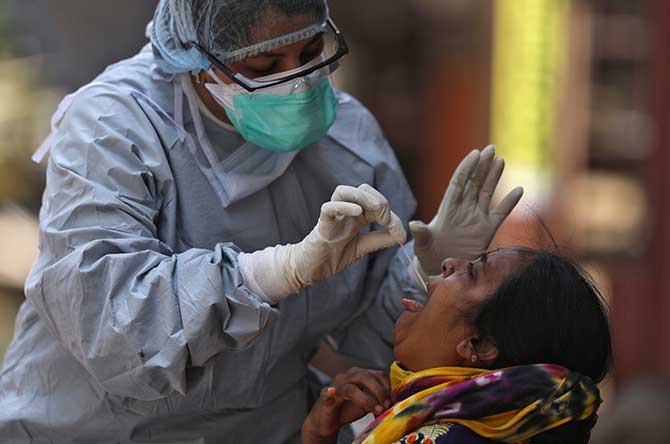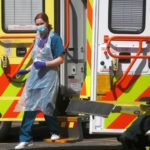Testing people for COVID-19 too early in the course of infection may result in a false negative diagnosis, even though they may eventually test positive for the virus, according to a study which says it is best performed three days after the symptoms appear.
The review research, published in the journal Annals of Internal Medicine, assessed data on RT-PCR tests — which detect viral genetic material in samples — from seven prior studies.
In the analysis, the researchers from Johns Hopkins University in the United States analysed a total of 1,330 respiratory swab samples from a variety of subjects including hospitalised patients.
“A negative test, whether or not a person has symptoms, doesn’t guarantee that they aren’t infected by the virus,” said Lauren Kucirka, a co-author of the study from Johns Hopkins University.
“How we respond to, and interpret, a negative test is very important because we place others at risk when we assume the test is perfect. However, those infected with the virus are still able to potentially spread the virus,” Kucirka explained.
According to the scientists, patients who have a high-risk exposure should be treated as if they are infected, particularly if they have symptoms consistent with COVID-19.
They believe that patients must be informed about the tests’ shortcomings.
Explaining how RT-PCR tests may yield a false negative results, the scientists said, when a swab misses collecting cells infected with the virus, or if virus levels are very low early during the infection, some tests can produce negative results.
However, they said the tests return relatively rapid results, due to which they have been widely used among high-risk populations such as nursing home residents, hospitalised patients, and health care workers.
Based on previous studies, the scientists cautioned that there could be false negatives in these populations.
In the current research, using RT-PCR test results, along with reported time of exposure to the virus or time of onset of measurable symptoms such as fever and breathing problems, the researchers calculated the probability that someone infected with SARS-CoV-2 would have a negative test result at the time of infection.
In the assessed studies, they said health care providers also collected nasal and throat samples from patients and noted the time of virus exposure or symptom-onset and sample collection.
From this data, the researchers estimated that those tested with SARS-CoV-2 in the four days after infection were 67 per cent more likely to test negative, even if they had the virus.
When the average patient began displaying symptoms of the virus, the false-negative rate was 38 per cent, the study noted.
According to the researchers, the test performed best eight days after infection, which on average is three days after symptom onset.
But even then, they said the test had a false negative rate of 20 per cent, meaning one in five people who had the virus had a negative test result.
“We are using these tests to rule out COVID-19, and basing decisions about what steps we take to prevent onward transmission, such as selection of personal protective equipment for health care workers,” says Kucirka.
“As we develop strategies to reopen services, businesses and other venues that rely on testing and contact tracing, it is important to understand the limitations of these tests,” she added.
The sooner people can be accurately tested and isolated from others, the better we can control the spread of the virus, the scientists said.




